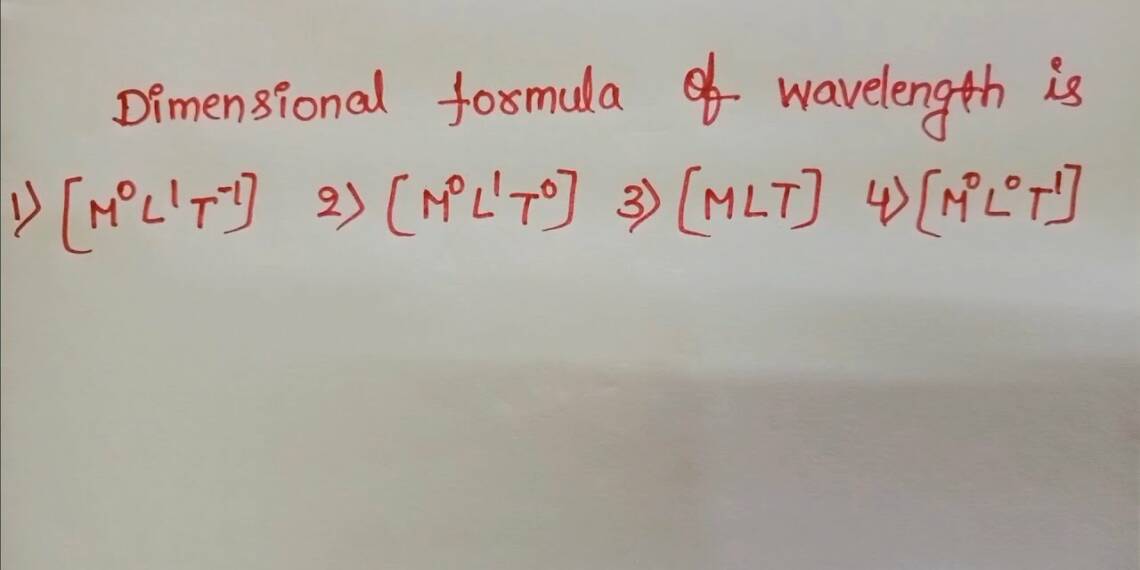What is the Dimensional Formula of Wavelength?
Take a tour through the complex idea of the dimensional formula of wavelength and discover the basic terms that characterize this crucial physics concept.
Dimensional Formula of Wavelength
A wavelength is comparable to the separation between a wave’s peaks. Consider the waves in the ocean. Do you notice how each wave varies in length from the next? That is analogous to wavelength. Modern science makes use of a “dimensional formula” to comprehend and characterize physical quantities such as wavelength.
To put it simply, when we discuss the size of waves, the dimensional formula of wavelength explains the connections between various objects. It functions similarly to a unique code that enables scientists to explain waves to the general public.
Three primary components make up the dimensional formula for wavelength: mass, length, and time. These resemble the fundamental components of our universe. Time is the passage of moments, length is the size of an object, and mass is the amount of material that an object contains.
By combining these three variables in a specific way, we obtain the wavelength dimensional formula. It appears as follows:
[M0L1T0]
Allow me to elucidate those symbols. The small “0” indicates that mass is not significantly involved in wavelength, and “M” stands for mass. “L” represents length, and the small “1” indicates that it has a minor role, such as informing us of the size of the waves. The little “-1” indicates that time (“T”) is in the denominator, which is equivalent to informing us of the frequency of waves.
Also Read: What Is the Opposite Gender of a Master and 10 Lines
Thus, when scientists look at this code [M0L1T0], they understand that it is discussing wavelength, the separation between wave peaks, and the unique relationship between time, length, and mass. It functions as a sort of code that enables them to comprehend and discuss waves in an incredibly neat and structured manner!








